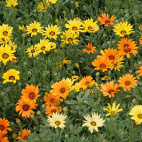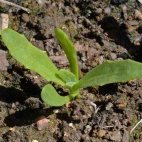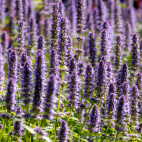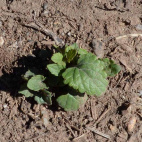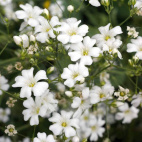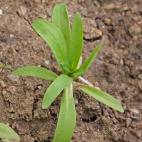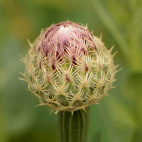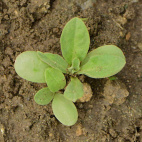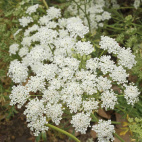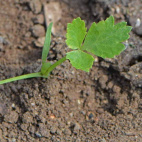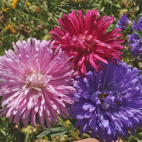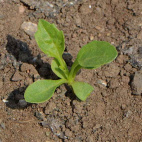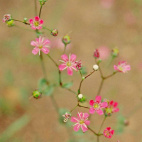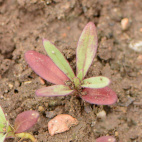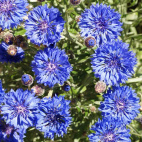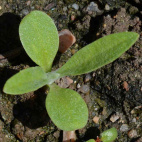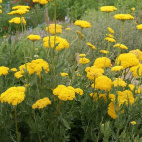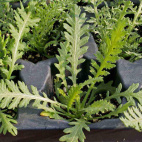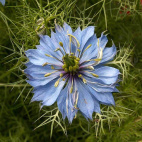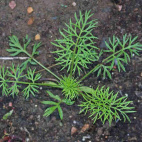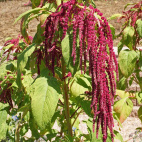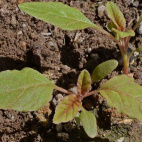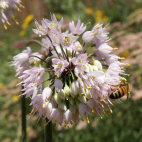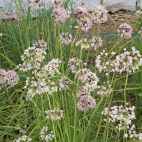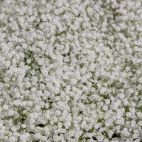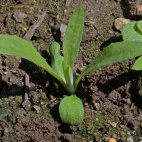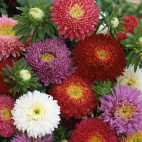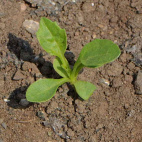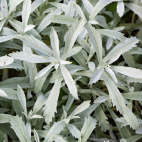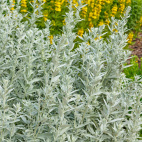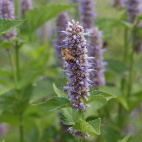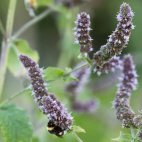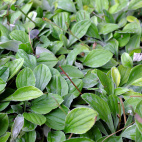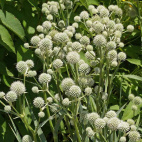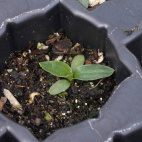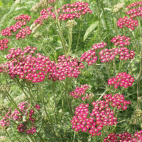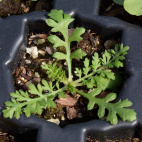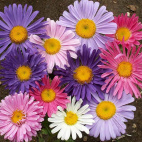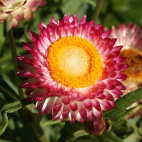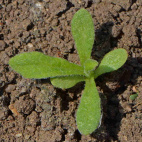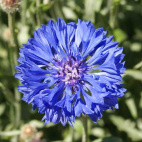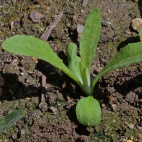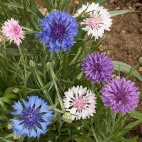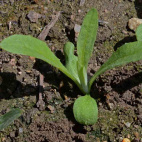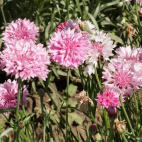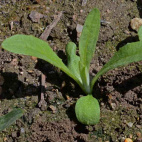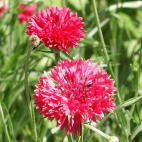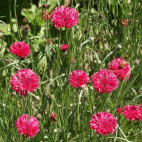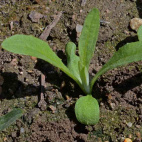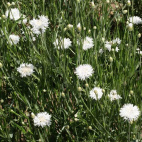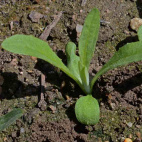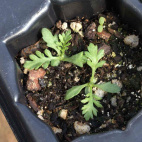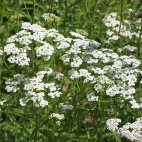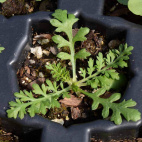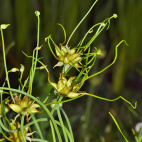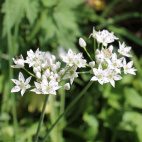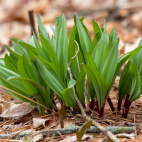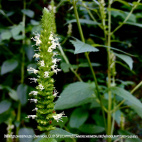Color
Availability
USDA Zone
Region
Type
Duration
Season
Germination
Soil
Sunlight
Height
Use
Narrow Your Search
Color
Availability
USDA Zone
Region
Type
Duration
Season
Germination
Soil
Sunlight
Height
Use
Wildflower Seeds - Southeast Region
-
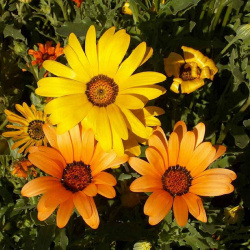 On Sale!
African Daisy Seeds
Dimorphotheca sinuata
These orange and yellow Daisies come from the wilds of Africa but will bring cheer and sunshine wherever they are planted. Always facing the sun, the bright blossoms close at sunset and in cloudy weather.Quick View$3.48 Pkt - $8.93 / Oz
On Sale!
African Daisy Seeds
Dimorphotheca sinuata
These orange and yellow Daisies come from the wilds of Africa but will bring cheer and sunshine wherever they are planted. Always facing the sun, the bright blossoms close at sunset and in cloudy weather.Quick View$3.48 Pkt - $8.93 / Oz -
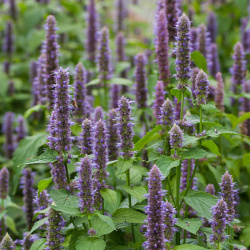 Anise Hyssop Seeds
Agastache foeniculum
A member of the mint family, this wildflower brings a delightfully rich scent to any herb garden. The tall, lavender flower spikes attract multitudes of hummingbirds, bees, and butterflies. It is a favorite with beekeepers, and we have found that the anise honey from this plant is excellent!Quick Viewx
Anise Hyssop Seeds
Agastache foeniculum
A member of the mint family, this wildflower brings a delightfully rich scent to any herb garden. The tall, lavender flower spikes attract multitudes of hummingbirds, bees, and butterflies. It is a favorite with beekeepers, and we have found that the anise honey from this plant is excellent!Quick ViewxAnise Hyssop Seeds
Agastache foeniculum
A member of the mint family, this wildflower brings a delightfully rich scent to any herb garden. The tall, lavender flower spikes attract multitudes of hummingbirds, bees, and butterflies. It is a favorite with beekeepers, and we have found that the anise honey from this plant is excellent!
$3.48 Pkt - $16.57 / Oz -
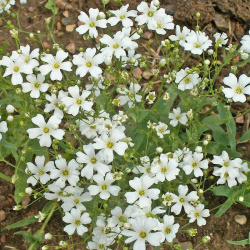 On Sale!
Annual Baby's Breath Seeds
Gypsophila elegans
Delicate, white sprays create a vision of loveliness for any occasion. This easy-to-grow annual grows quickly, and is popular for floral bouquets, but looks great in the garden too.Quick View$2.98 Pkt - $5.96 / Oz
On Sale!
Annual Baby's Breath Seeds
Gypsophila elegans
Delicate, white sprays create a vision of loveliness for any occasion. This easy-to-grow annual grows quickly, and is popular for floral bouquets, but looks great in the garden too.Quick View$2.98 Pkt - $5.96 / Oz -
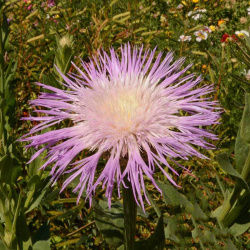 On Sale!
Basketflower Seeds
Centaurea americana
The basket-like base of these blossoms holds delicate petals, hence its name. Although it is a distant relative of the thistle, the colorful flowers give off a sweet honey-like scent.Quick View$3.48 Pkt - $16.57 / Oz
On Sale!
Basketflower Seeds
Centaurea americana
The basket-like base of these blossoms holds delicate petals, hence its name. Although it is a distant relative of the thistle, the colorful flowers give off a sweet honey-like scent.Quick View$3.48 Pkt - $16.57 / Oz -
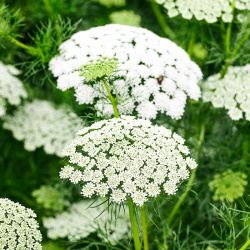 Bishop's Flower Seeds
Ammi majus
Sometimes mistaken for Queen Anne's Lace, this lovely annual grows neat, delicate clusters. The blooms are famous for their long-lasting beauty both in fresh and dried floral arrangements.Quick View$2.98 Pkt - $7.41 / Oz
Bishop's Flower Seeds
Ammi majus
Sometimes mistaken for Queen Anne's Lace, this lovely annual grows neat, delicate clusters. The blooms are famous for their long-lasting beauty both in fresh and dried floral arrangements.Quick View$2.98 Pkt - $7.41 / Oz -
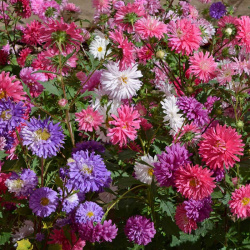 Crego China Aster Seed Mix
Callistephus chinensis
A stunning cut flower, these large blossoms grow in lovely pastel shades of pink, red, violet, and white. This easy-to-grow annual aster will readily reseed itself.Quick Viewx
Crego China Aster Seed Mix
Callistephus chinensis
A stunning cut flower, these large blossoms grow in lovely pastel shades of pink, red, violet, and white. This easy-to-grow annual aster will readily reseed itself.Quick ViewxCrego China Aster Seed Mix
Callistephus chinensis
A stunning cut flower, these large blossoms grow in lovely pastel shades of pink, red, violet, and white. This easy-to-grow annual aster will readily reseed itself.
$3.48 Pkt - $7.59 / Oz -
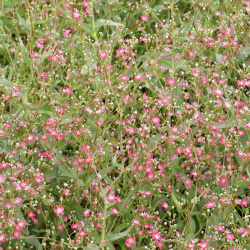 Deep Carmine Baby's Breath Seeds
Gypsophila elegans
Tiny crimson flowers, and feathery gray-green foliage gives a delicate, airy feel. This annual is perfect for floral arrangements and is very easy to grow in the home garden.Quick View$3.25 Pkt - $9.54 / Oz
Deep Carmine Baby's Breath Seeds
Gypsophila elegans
Tiny crimson flowers, and feathery gray-green foliage gives a delicate, airy feel. This annual is perfect for floral arrangements and is very easy to grow in the home garden.Quick View$3.25 Pkt - $9.54 / Oz -
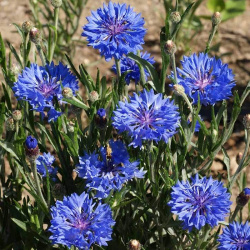 Dwarf Blue Bachelor Button Cornflower Seeds
Centaurea cyanus
Best known for its vivid blue color, this old-fashioned annual wildflower continues to be a favorite. Lovely fresh or dried, this dwarf grows less than a foot tall and works well in small spaces.Quick View$3.48 Pkt - $5.96 / Oz
Dwarf Blue Bachelor Button Cornflower Seeds
Centaurea cyanus
Best known for its vivid blue color, this old-fashioned annual wildflower continues to be a favorite. Lovely fresh or dried, this dwarf grows less than a foot tall and works well in small spaces.Quick View$3.48 Pkt - $5.96 / Oz -
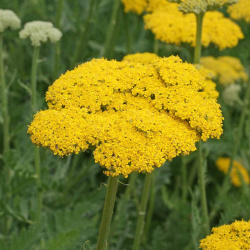 Gold Yarrow Seeds
Achillea filipendulina
Fragrant, fern-like foliage, and cheerful, long-lasting flowers make this an enduring favorite. It is quite a bit taller and brighter than the Common White Yarrow. Beautiful en masse, or as a border plant.Quick View$3.48 Pkt - $16.57 / Oz
Gold Yarrow Seeds
Achillea filipendulina
Fragrant, fern-like foliage, and cheerful, long-lasting flowers make this an enduring favorite. It is quite a bit taller and brighter than the Common White Yarrow. Beautiful en masse, or as a border plant.Quick View$3.48 Pkt - $16.57 / Oz -
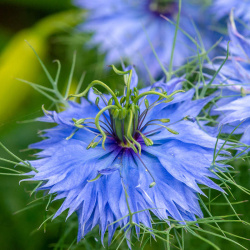 On Sale!
Love In A Mist Seeds
Nigella damascena
A time-honored favorite in English cottage gardens, this annual originally comes from the Mediterranean region. It blooms in colors like blue, pink and white, and can be enjoyed either fresh or in dried flower arrangements.Quick View$3.48 Pkt - $7.01 / Oz
On Sale!
Love In A Mist Seeds
Nigella damascena
A time-honored favorite in English cottage gardens, this annual originally comes from the Mediterranean region. It blooms in colors like blue, pink and white, and can be enjoyed either fresh or in dried flower arrangements.Quick View$3.48 Pkt - $7.01 / Oz -
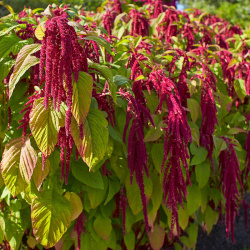 Love Lies Bleeding Seeds
Amaranthus caudatus
Once grown in Victorian English gardens, this unusual annual develops long, crimson tassels. In the language of flowers, it represents hopeless love. It is actually a pretty variety of grain from the amaranth family. Find out when to plant Love Lies Bleeding seeds by checking out our how to grow info.Quick Viewx
Love Lies Bleeding Seeds
Amaranthus caudatus
Once grown in Victorian English gardens, this unusual annual develops long, crimson tassels. In the language of flowers, it represents hopeless love. It is actually a pretty variety of grain from the amaranth family. Find out when to plant Love Lies Bleeding seeds by checking out our how to grow info.Quick ViewxLove Lies Bleeding Seeds
Amaranthus caudatus
Once grown in Victorian English gardens, this unusual annual develops long, crimson tassels. In the language of flowers, it represents hopeless love. It is actually a pretty variety of grain from the amaranth family. Find out when to plant Love Lies Bleeding seeds by checking out our how to grow info.
$2.98 Pkt - $7.01 / Oz -
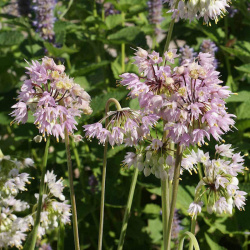 Nodding Onion Seeds
Allium cernuum
This perennial wildflower attracts butterflies with its tiny, pink, bell-shaped blossoms that form a globe at the top of the stem. Not only are the flowers pretty, the onion-flavored leaves and flowers are also edible, and may also be used in salads or as a garnish.Quick Viewx
Nodding Onion Seeds
Allium cernuum
This perennial wildflower attracts butterflies with its tiny, pink, bell-shaped blossoms that form a globe at the top of the stem. Not only are the flowers pretty, the onion-flavored leaves and flowers are also edible, and may also be used in salads or as a garnish.Quick ViewxNodding Onion Seeds
Allium cernuum
This perennial wildflower attracts butterflies with its tiny, pink, bell-shaped blossoms that form a globe at the top of the stem. Not only are the flowers pretty, the onion-flavored leaves and flowers are also edible, and may also be used in salads or as a garnish.
$3.48 Pkt - $26.00 / Oz -
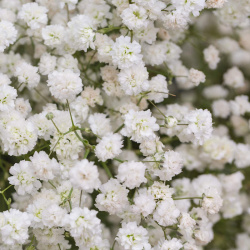 Out Of Stock
Perennial Baby's Breath Seeds
Gypsophila paniculata
Add light, airy charm to any floral arrangement or garden with this classic favorite. Once established, this perennial is pretty carefree and blooms all summer long.Quick Viewx
Out Of Stock
Perennial Baby's Breath Seeds
Gypsophila paniculata
Add light, airy charm to any floral arrangement or garden with this classic favorite. Once established, this perennial is pretty carefree and blooms all summer long.Quick ViewxPerennial Baby's Breath Seeds
Gypsophila paniculata
Add light, airy charm to any floral arrangement or garden with this classic favorite. Once established, this perennial is pretty carefree and blooms all summer long.
$2.98 Pkt - $8.20 / Oz -
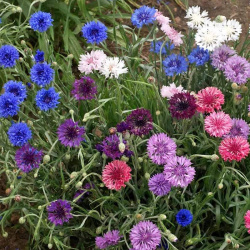 Polka Dot Bachelor Button Seed Mix
Centaurea cyanus
This easy-to-grow favorite annual comes in a bright mix of blue, purple, pink, white, and rose. Excellent for dried flower arrangements or potpourri. The plant is a dwarf, so it is great for gardens with limited space.Quick View$3.48 Pkt - $5.96 / Oz
Polka Dot Bachelor Button Seed Mix
Centaurea cyanus
This easy-to-grow favorite annual comes in a bright mix of blue, purple, pink, white, and rose. Excellent for dried flower arrangements or potpourri. The plant is a dwarf, so it is great for gardens with limited space.Quick View$3.48 Pkt - $5.96 / Oz -
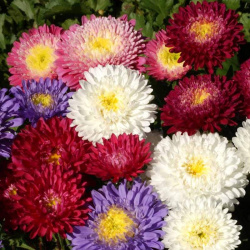 Powder Puff China Aster Seed Mix
Callistephus chinensis
Popular for cut flowers, this double flower blooms in red, purple, blue, and white. This easy-to-grow annual will reseed itself for the next growing season.Quick View$3.48 Pkt - $7.65 / Oz
Powder Puff China Aster Seed Mix
Callistephus chinensis
Popular for cut flowers, this double flower blooms in red, purple, blue, and white. This easy-to-grow annual will reseed itself for the next growing season.Quick View$3.48 Pkt - $7.65 / Oz -
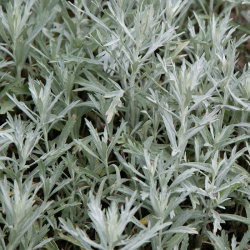 Prairie Sage Seeds
Artemisia ludoviciana
This attractive plant will fill the air with a spicy scent. The silvery foliage stands out in beautiful contrast in native plantings, as well as being a carefree, bushy ground cover.Quick View$3.75 Pkt - $28.00 / Oz
Prairie Sage Seeds
Artemisia ludoviciana
This attractive plant will fill the air with a spicy scent. The silvery foliage stands out in beautiful contrast in native plantings, as well as being a carefree, bushy ground cover.Quick View$3.75 Pkt - $28.00 / Oz -
 Purple Giant Hyssop Seeds
Agastache scrophulariaefolia
This lovely, tall wildflower adds beauty and color to meadows and gardens. In addition, it is a wonderful honey plant - the fragrant foliage is irresistible to birds, bees, and butterflies.Quick View$3.48 Pkt - $36.00 / Oz
Purple Giant Hyssop Seeds
Agastache scrophulariaefolia
This lovely, tall wildflower adds beauty and color to meadows and gardens. In addition, it is a wonderful honey plant - the fragrant foliage is irresistible to birds, bees, and butterflies.Quick View$3.48 Pkt - $36.00 / Oz -
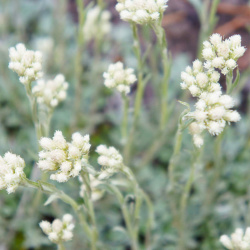 Pussytoes Seeds
Antennaria plantaginifolia
Children will love these fun, fuzzy flowers because they look and feel like tiny kitten paws. The dense, attractive foliage is drought resistant and makes an excellent ground cover for rocky, dry locations.Quick View$3.96 Pkt - $280.00 / Oz
Pussytoes Seeds
Antennaria plantaginifolia
Children will love these fun, fuzzy flowers because they look and feel like tiny kitten paws. The dense, attractive foliage is drought resistant and makes an excellent ground cover for rocky, dry locations.Quick View$3.96 Pkt - $280.00 / Oz -
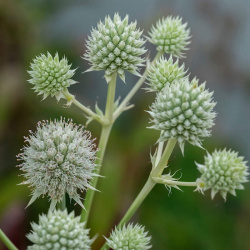 Rattlesnake Master Seeds
Eryngium yuccifolium
This unusual native wildflower will add unique texture and interest to any planting. The spiky, greenish balls grow on tall stalks and are easy to identify because they look somewhat like the spiny Yucca plant of the American West.Quick View$3.75 Pkt - $14.49 / Oz
Rattlesnake Master Seeds
Eryngium yuccifolium
This unusual native wildflower will add unique texture and interest to any planting. The spiky, greenish balls grow on tall stalks and are easy to identify because they look somewhat like the spiny Yucca plant of the American West.Quick View$3.75 Pkt - $14.49 / Oz -
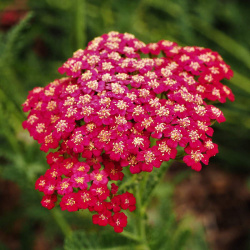 Red Yarrow Seeds
Achillea millefolium rubra
Fragrant foliage and cheerful, long-lasting flowers make this an enduring favorite. Try this variety if you want to add color to a dry area. Yarrow is also valued for its herbal properties.Quick View$3.48 Pkt - $18.77 / Oz
Red Yarrow Seeds
Achillea millefolium rubra
Fragrant foliage and cheerful, long-lasting flowers make this an enduring favorite. Try this variety if you want to add color to a dry area. Yarrow is also valued for its herbal properties.Quick View$3.48 Pkt - $18.77 / Oz -
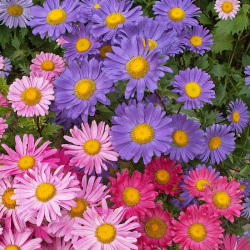 Single China Aster Seed Mix
Callistephus chinensis
This fast-growing annual blooms in beautiful shades of pink, purple, red, and white. The daisy-like flower does reseed itself to produce blooms in the following growing season.Quick Viewx
Single China Aster Seed Mix
Callistephus chinensis
This fast-growing annual blooms in beautiful shades of pink, purple, red, and white. The daisy-like flower does reseed itself to produce blooms in the following growing season.Quick ViewxSingle China Aster Seed Mix
Callistephus chinensis
This fast-growing annual blooms in beautiful shades of pink, purple, red, and white. The daisy-like flower does reseed itself to produce blooms in the following growing season.
$3.48 Pkt - $7.52 / Oz -
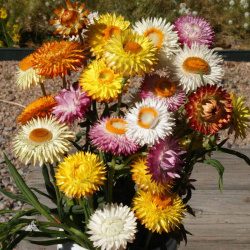 Tall Strawflower Seeds
Helichrysum bracteatum
Originating in Australia, Strawflowers still grow there in the wild. The dried flowers retain lovely shades of yellow, red, orange, pink, and white, which can readily be used in dried flower arrangements.Quick View$3.48 Pkt - $10.45 / Oz
Tall Strawflower Seeds
Helichrysum bracteatum
Originating in Australia, Strawflowers still grow there in the wild. The dried flowers retain lovely shades of yellow, red, orange, pink, and white, which can readily be used in dried flower arrangements.Quick View$3.48 Pkt - $10.45 / Oz -
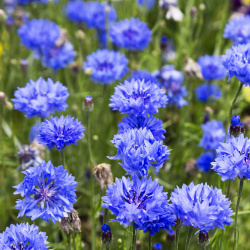 On Sale!
Tall Blue Bachelor Button Cornflower Seeds
Centaurea cyanus
Perhaps the most recognized feature of this annual wildflower is its famous shade of cornflower blue. These easy-to-grow beauties reach a medium height and are at home in every carefree garden.Quick View$3.48 Pkt - $5.96 / Oz
On Sale!
Tall Blue Bachelor Button Cornflower Seeds
Centaurea cyanus
Perhaps the most recognized feature of this annual wildflower is its famous shade of cornflower blue. These easy-to-grow beauties reach a medium height and are at home in every carefree garden.Quick View$3.48 Pkt - $5.96 / Oz -
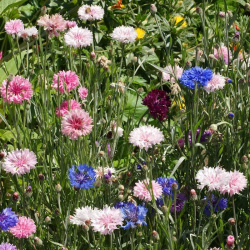 On Sale!
Tall Bachelor Button Cornflower Seed Mix
Centaurea cyanus
Shades of red, white, pink, and blue will brighten any corner of the garden with this favorite old-fashioned annual. The longer stems of this variety are perfect for fresh or dried flower arrangements.Quick View$3.48 Pkt - $5.96 / Oz
On Sale!
Tall Bachelor Button Cornflower Seed Mix
Centaurea cyanus
Shades of red, white, pink, and blue will brighten any corner of the garden with this favorite old-fashioned annual. The longer stems of this variety are perfect for fresh or dried flower arrangements.Quick View$3.48 Pkt - $5.96 / Oz -
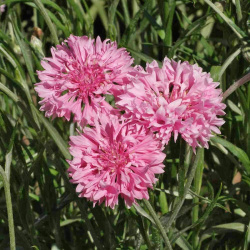 Tall Pink Bachelor Button Cornflower Seeds
Centaurea cyanus
Blushing pink blossoms add beauty and charm to any garden or bouquet. This annual heirloom variety has long stems, so it is perfect for creating fresh or dried flower arrangements.Quick View$3.25 Pkt - $6.67 / Oz
Tall Pink Bachelor Button Cornflower Seeds
Centaurea cyanus
Blushing pink blossoms add beauty and charm to any garden or bouquet. This annual heirloom variety has long stems, so it is perfect for creating fresh or dried flower arrangements.Quick View$3.25 Pkt - $6.67 / Oz -
 Tall Red Bachelor Button Cornflower Seeds
Centaurea cyanus
Bright as a button, these annual crimson blooms will bring cheer to any occasion. Beautiful for fresh or dried flower arrangements with its long stems.Quick View$3.25 Pkt - $5.96 / Oz
Tall Red Bachelor Button Cornflower Seeds
Centaurea cyanus
Bright as a button, these annual crimson blooms will bring cheer to any occasion. Beautiful for fresh or dried flower arrangements with its long stems.Quick View$3.25 Pkt - $5.96 / Oz -
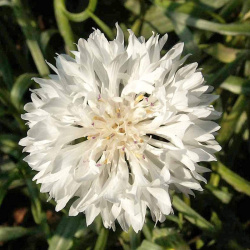 Tall White Bachelor Button Cornflower Seeds
Centaurea cyanus
Pop this white beauty into a buttonhole for any special occasion. This wildflower is an annual that looks great in the garden, in a fresh bouquet, or in a dried flower arrangement.Quick Viewx
Tall White Bachelor Button Cornflower Seeds
Centaurea cyanus
Pop this white beauty into a buttonhole for any special occasion. This wildflower is an annual that looks great in the garden, in a fresh bouquet, or in a dried flower arrangement.Quick ViewxTall White Bachelor Button Cornflower Seeds
Centaurea cyanus
Pop this white beauty into a buttonhole for any special occasion. This wildflower is an annual that looks great in the garden, in a fresh bouquet, or in a dried flower arrangement.
$3.25 Pkt - $6.67 / Oz -
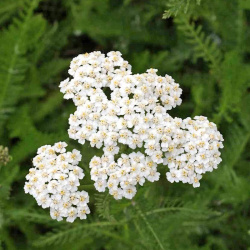 Western Yarrow Seeds
Achillea millefolium occidentalis
Growing clusters of small white flowers and feathery foliage, this is one of the most common wildflowers in the western United States. Yarrow makes an excellent pollen source in arid conditions.Quick View$2.98 Pkt - $9.54 / Oz
Western Yarrow Seeds
Achillea millefolium occidentalis
Growing clusters of small white flowers and feathery foliage, this is one of the most common wildflowers in the western United States. Yarrow makes an excellent pollen source in arid conditions.Quick View$2.98 Pkt - $9.54 / Oz -
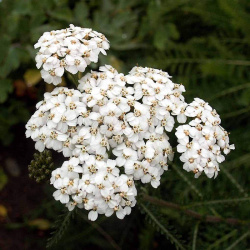 On Sale!
White Yarrow Seeds
Achillea millefolium
This wildflower is a common sight across the US and is often found growing in dry soils. The foliage is aromatic, and the long-lasting flowers work well for dried arrangements. Yarrow is also a valuable species for its herbal properties.Quick View$2.98 Pkt - $8.20 / Oz
On Sale!
White Yarrow Seeds
Achillea millefolium
This wildflower is a common sight across the US and is often found growing in dry soils. The foliage is aromatic, and the long-lasting flowers work well for dried arrangements. Yarrow is also a valuable species for its herbal properties.Quick View$2.98 Pkt - $8.20 / Oz -
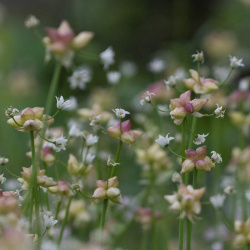 Store in the FridgeOn Sale!
Wild Garlic Seeds
Allium canadense
This native herb has been valued for centuries for both its culinary and medicinal excellence. Both the leaves and flowers have an excellent mild flavor for use in fresh salads, entrees, or as a garnish. It also flowers with the distinctive globe-shaped allium blooms. The small bulblets that we offer here are the best way to get them started.Quick Viewx
Store in the FridgeOn Sale!
Wild Garlic Seeds
Allium canadense
This native herb has been valued for centuries for both its culinary and medicinal excellence. Both the leaves and flowers have an excellent mild flavor for use in fresh salads, entrees, or as a garnish. It also flowers with the distinctive globe-shaped allium blooms. The small bulblets that we offer here are the best way to get them started.Quick ViewxWild Garlic Seeds
Allium canadense
This native herb has been valued for centuries for both its culinary and medicinal excellence. Both the leaves and flowers have an excellent mild flavor for use in fresh salads, entrees, or as a garnish. It also flowers with the distinctive globe-shaped allium blooms. The small bulblets that we offer here are the best way to get them started.
$3.48 Pkt - $11.47 / Oz -
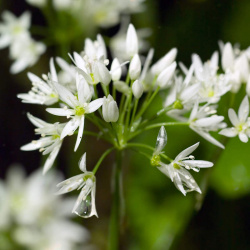 Store in the Fridge
Wild Leek Seeds
Allium tricoccum
Known as Ramps in the culinary world, leeks are considered a springtime delicacy. The mild bulbs have sweet onion-like flavor with a hint of garlic. It takes a few years of growing in a shady setting, but it is well worth the wait!Quick View$3.75 Pkt - $46.00 / Oz
Store in the Fridge
Wild Leek Seeds
Allium tricoccum
Known as Ramps in the culinary world, leeks are considered a springtime delicacy. The mild bulbs have sweet onion-like flavor with a hint of garlic. It takes a few years of growing in a shady setting, but it is well worth the wait!Quick View$3.75 Pkt - $46.00 / Oz -
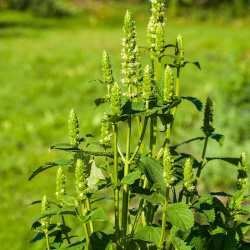 Yellow Giant Hyssop Seeds
Agastache nepetoides
This gigantic native wildflower grows up to 6 feet tall and bears spikes of tightly clustered pale yellow flowers. The spicy, licorice-scented foliage is very attractive to birds, butterflies, and bees.Quick View$3.48 Pkt - $44.00 / Oz
Yellow Giant Hyssop Seeds
Agastache nepetoides
This gigantic native wildflower grows up to 6 feet tall and bears spikes of tightly clustered pale yellow flowers. The spicy, licorice-scented foliage is very attractive to birds, butterflies, and bees.Quick View$3.48 Pkt - $44.00 / Oz











